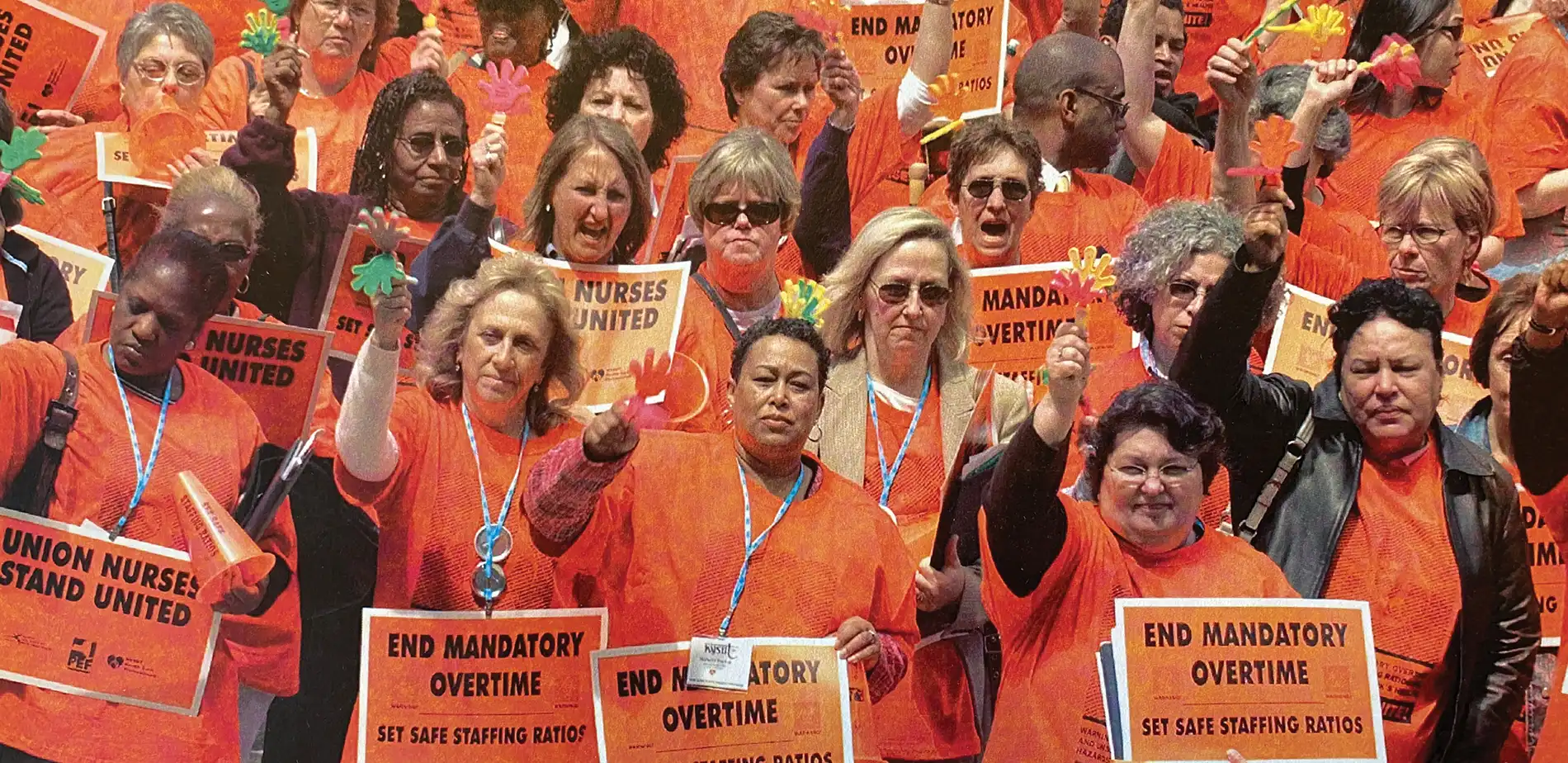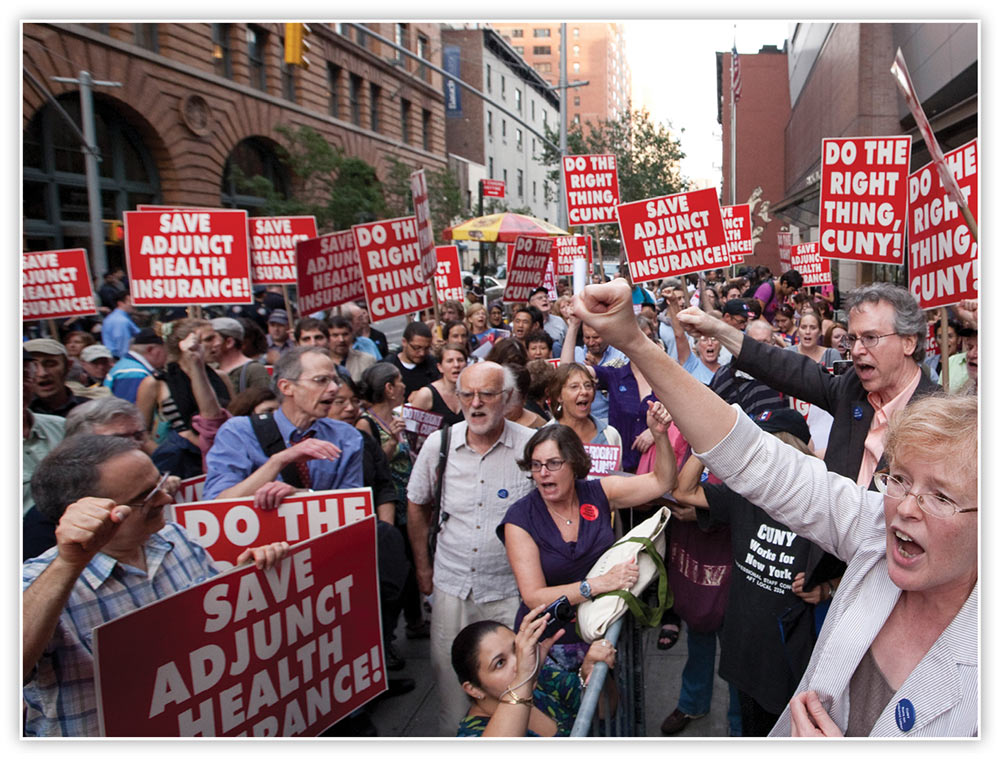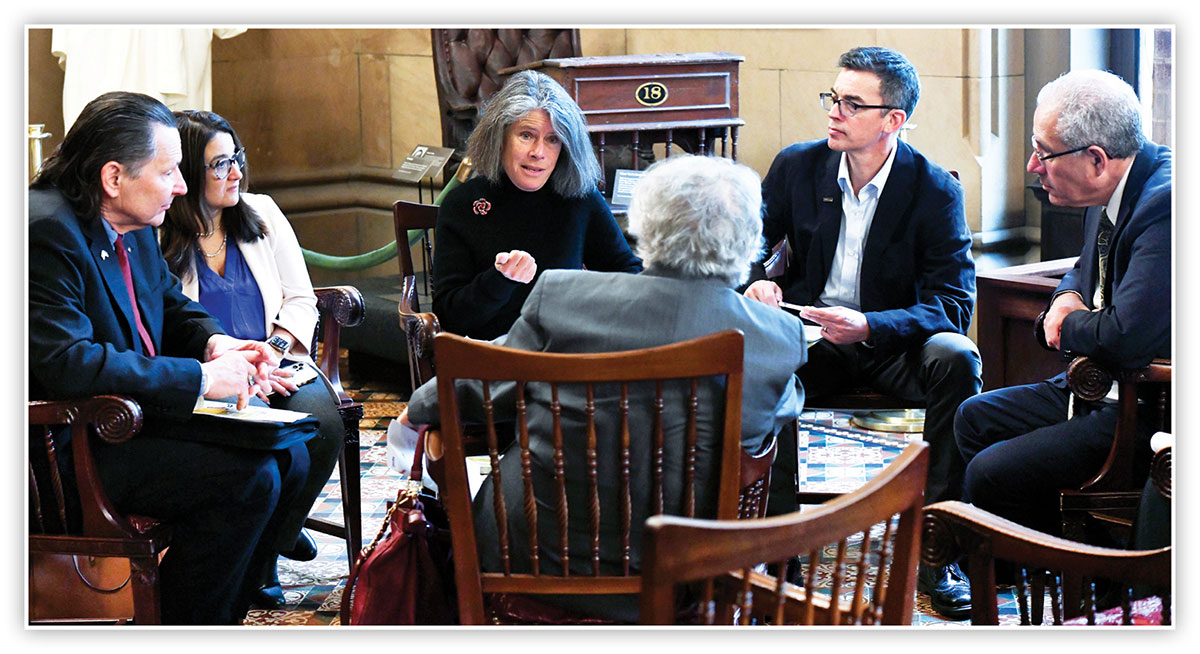The Sum of Many Parts

SRP, higher ed, health care members advance NYSUT’s strength
In the ’70s, as locals were being organized by school district, social workers, psychologists, librarians and nurses found a logical home in “the teachers’ union.” The same was true for School-Related Professionals, an umbrella term encompassing teacher aides, teaching assistants, bus drivers, custodians, food service workers, administrative staff and more.
Locals representing faculty and staff in public higher education affiliated during NYSUT’s formative years. After NYSUT won legislation in the 1980s enabling them to organize, substitute teachers also formed locals and gained improvements in pay and benefits.
As the union grew, the full list of NYSUT-represented job titles kept expanding. Today it includes everything from engineer to technology coach to lifeguard to security officer. NYSUT enters its sixth decade as a federation of more than 1,300 local unions, each representing its own members and negotiating contracts specific to members’ needs. Locals range in size from the 200,000-member United Federation of Teachers in New York City to locals of fewer than 10 members.
What’s in a name?
“A member is a member is a member” was the oft-repeated mantra of founding President Thomas Y. Hobart Jr. “Who does the hard work of this great nation?” he asked at a NYSUT RA in 1993. “Look around you: … Every member, every day doing the most important jobs in our society. Our fight is the fight for New York’s future.”

School-Related Professionals
Initial SRP contracts earned members raises, sick leave, and — most important — voice. An early milestone for SRPs was the 1986 passage of the “12-for-10 law” ensuring that SRPs working a 10-month school year receive a full year of retirement credit. Other safeguards have addressed care of medically fragile children and workplace health and safety. In 2022, the union celebrated a win on mandatory overtime pay for home health aides.
Originally known as School-Related Personnel, SRP members opted to change their union designation to School-Related Professionals to better reflect their shared commitment on the job.
For years, NYSUT has provided a wide range of courses tailored to SRPs through its Education & Learning Trust. When circumstances require it — for instance, when the state rapidly changed certification requirements for teaching assistants during the era of test-and-punish — NYSUT provides immediate support and training statewide to ensure members can meet new job requirements.
“There are so many issues facing us,” said custodian Glenn Lucas, from the Federation of United School Employees of New Rochelle. School budgets, for example, affect “negotiations, job security and privatization efforts.”
Western New York bus driver Janet Gutekunst volunteered early on with the Committee of 100, NYSUT’s grassroots lobby group. “We are all public employees, and lots of things affect us. I’d like to see SRPs get even more involved. When we speak up, NYSUT listens; and this means that legislators listen, too.”
‘“We are where we are today with NYSUT’s support,” said Sandra Carner-Shafran, SRP leader from the Saratoga Adirondack BOCES EA and longtime NYSUT Board director. The back of her local union’s T-shirt says it all: “In Unity There is Strength.”
Higher education
These issues and more have been tackled by NYSUT and its higher education affiliates: the Professional Staff Congress of City University of New York; United University Professions representing academic and professional faculty at the State University; and locals representing employees at the state’s community colleges and private colleges.
“Consider what the state of public higher education in New York would be like without unions,” asked UUP leader William Scheuerman. “Under what conditions would faculty and staff work? How devastating would have been the budget cuts? How many positions and programs would have been lost? And what of academic freedom, professionalism and individual benefits?”
In the 1960s, higher ed unionists received a boost from K-12 teachers whose unions were already breaking new ground. At Fashion Institute of Technology, for example, early union activists met with UFT President Al Shanker for help with their first contract negotiations. In 1967 FIT became the first public higher education union in the state to gain a contract.
“It was telling that a very powerful K-12 local was very willing to help a higher ed local get started,” said Lou Stollar, former president of the United College Employees at FIT. “It set the tone for cooperation between higher ed and K-12.”
Higher ed unionism was spurred initially in New York City by a strike in 1965–66 at St. John’s University, which dismissed 31 faculty without charges or hearings. Faculty throughout the region were stirred to activism, and the union spirit quickly spread to other campuses. UUP and PSC joined NYSUT in the ‘70s.
Solidarity is key
NYSUT and its higher ed locals perennially champion the importance of state funding, but a crisis erupted in the 2000s when SUNY’s upstate and downstate teaching hospitals were threatened with closure. Prevailing in their defense was a big union win — and continues to be a key challenge.
In the 2000s, advancing salary and benefits for adjunct faculty became a front burner issue for NYSUT and its higher ed locals. Recent progress includes negotiating contracts with state-funded health insurance and salary increases, and broadening and defining paths to promotion.

Health care professionals
NYSUT’s health care professionals were on the front lines when the COVID-19 virus swept New York state beginning in 2020. They responded heroically to the dire, continually morphing threat in an exhausting war that would go on for three years. The union had their back, buying and delivering hundreds of thousands of masks when employers ran short, along with food and other needed supplies.
The early days
Ann Marie Calabrese had specific reasons for choosing “the teachers’ union” as the first president of Albany Visiting Nurses Association after it voted for NYSUT affiliation in 1987. “Visiting nurses were very concerned about the safety and working conditions of home health care workers,” she said. Calabrese chose NYSUT for its strong bargaining skills, training and conferences.

Council members have been key in milestone victories, including banning mandatory overtime for most nurses in 2008 and the Safe Patient Handling Act in 2014, both advancing safety for patients and health care workers.
At a pre-pandemic NYSUT Professional Issues Forum on Health Care, Goldman’s words to her colleagues foreshadowed what would come: “We have to educate the public about our knowledge and our ability to respond. You are the lifeline.”
Timeline
-
1985NYSUT’s “30-55 bill” becomes law, providing a full pension for Tier Ill teachers who retire at 55 with 30 years of service.
-
1985NYSUT opposes a national voucher plan designed to funnel money from public to private schools.
-
1986After 22 years as UFT president, Al Shanker moves on to serve full-time as president of the American Federation of Teachers.
-
1987New York’s highest court upholds the Patchogue-Medford ruling that schools can’t force probationary teachers to submit to drug tests.
-
1987NYSUT establishes a Legal Defense Fund to assist members exonerated of job-related civil or criminal charges.
-
1988NYSUT takes the lead on the Task Force on the Teaching Profession, resulting in The New York Report: A Blueprint for Learning and Teaching.
 1989NYSUT’s “12-for-10” bill gives School-Related Personnel a full year of retirement credit for every school year worked, the same as teachers.
1989NYSUT’s “12-for-10” bill gives School-Related Personnel a full year of retirement credit for every school year worked, the same as teachers.